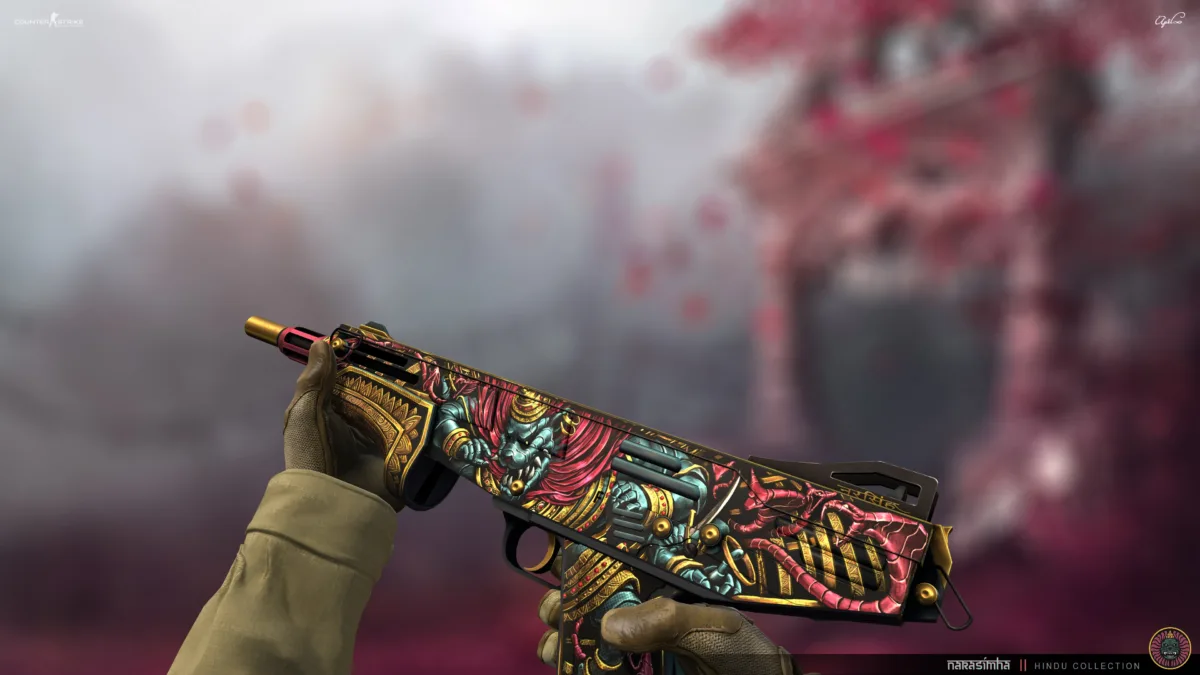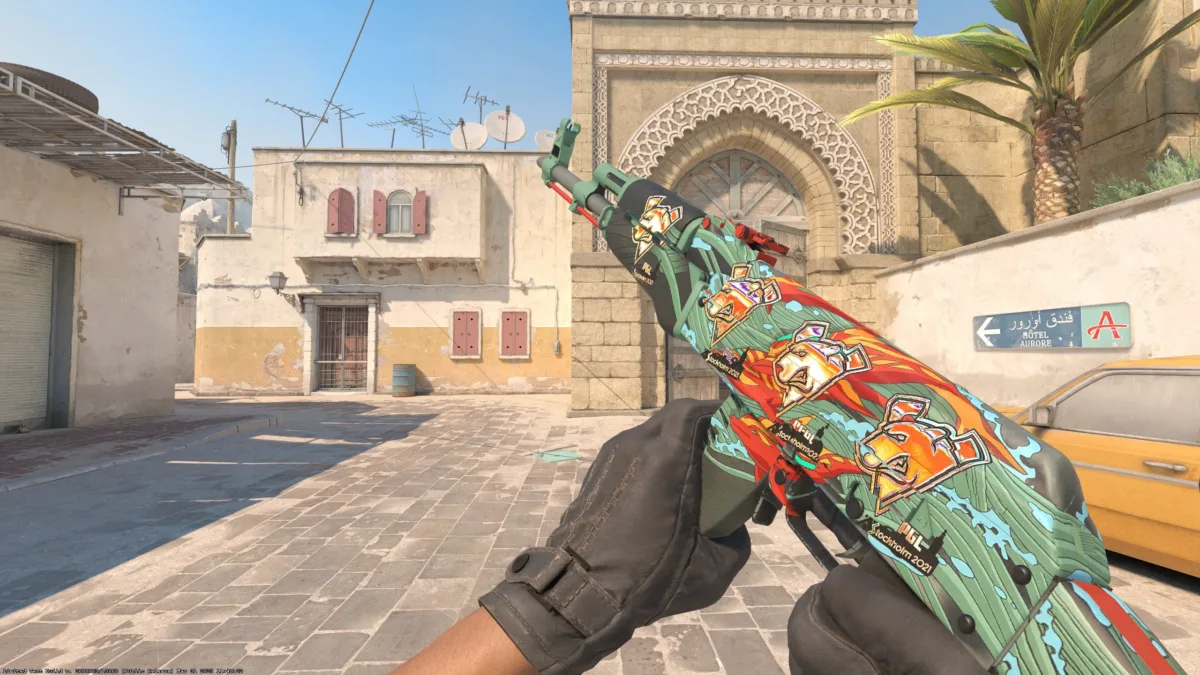The Appeal of Mythology-Inspired Skins in CS2
When it comes to CS2 skins, not all designs are created equal. Some are loud and flashy, made to be scrolled past and bought on impulse.
Others, though, seem to carry weight — like they’ve been around longer than the game itself. Mythology-inspired skins belong to that second category. They feel like relics dressed as rifles.
You see it clearly on Market CSGO skins, where ancient gods and mythical beasts don’t just decorate digital weapons — they shape how players perceive them.
Among the most recognizable of these is the M4A4 Poseidon, a skin that seems to have pulled its imagery straight out of an old saltwater legend.
But what makes these mythological designs so compelling? And why do they seem to hold their ground long after flashier trends fade?
The Quiet Weight of Old Stories
Mythology isn’t just about gods with dramatic hair or snakes that can turn you to stone. It’s about shared language — the kind that slips across centuries and still lands. When you see a trident or a coiling serpent etched onto a digital weapon, something clicks. It feels familiar, even if you can’t name the myth.
Unlike purely aesthetic designs, mythological skins in CS2 tap into a cultural reservoir that already exists. They don’t have to explain themselves. A dragon, a phoenix, Poseidon’s furious sea — these are images that already live rent-free in our collective imagination.
Players don’t just equip a skin like this. They equip a story. That’s what makes it different.
More Than Paint: Symbolism and Power
Every myth carries a symbol, and every symbol carries a weight. A Medusa represents danger and allure. A dragon suggests might and guardianship. Poseidon, all roaring waves and stormlight, stands for power that’s both majestic and unpredictable.
When these symbols are mapped onto a M4A4 skin, they don’t just become decoration. They become statements.
A weapon wrapped in myth whispers, “This isn’t just a rifle.” It implies something older, something larger. And in a game that thrives on moments — the flick, the entry, the ace — that added layer of story gives weight to otherwise fleeting seconds.
This subtle narrative pull is something that loud, purely graphical designs often lack. It’s not just about being noticed. It’s about being remembered.
Collectors and the Mythic Anchor
Collectors in the CSGO skins market are a curious breed. Their inventories are less about quantity and more about personality.
And while they might stock up on cheap CSGO skins for trading or case experimenting, mythology-themed pieces are often the ones that never leave.
That’s because these skins act like anchors. They ground a collection. They’re the centerpiece around which other skins orbit. You can flip dozens of neon rifles, but a Poseidon or Medusa is the sort of thing you hold onto.
The myth itself does the heavy lifting. You don’t need to explain why an ancient god on your weapon feels powerful. Everyone gets it.
Mythology in a Sea of Noise
The CSGO skins market is crowded. Every drop brings floods of new finishes — explosions, graffiti, brutalist patterns, glitch art, pastel gradients. Most of them fight for attention with volume: brighter colors, sharper lines, more movement.
Mythological skins don’t fight like that. They don’t need to.
They sit quietly in the corner and let centuries of storytelling do the talking. A single wave painted on a rifle can feel louder than a kaleidoscope of colors if it’s tied to the right story. It’s the difference between a shout and a chant.
This kind of aesthetic restraint is exactly what appeals to seasoned collectors. It’s also what keeps these skins from aging badly. Trends come and go. Myth doesn’t.
The Psychology of Legacy
Something happens when a player picks up a skin named after a god. It doesn’t just change how the weapon looks. It changes how the player feels.
That’s the psychology of legacy at work. Myths are timeless by design. So when a CS2 player wields a mythology-inspired rifle or knife, it creates a subtle illusion: as if their weapon is older than the match itself.
This is part performance, part emotion. Even if the player isn’t consciously thinking about the myth, the cultural associations sit beneath the surface, lending a strange kind of gravitas to every click.
Not Just About Rarity — About Permanence
A lot of people assume the draw of mythological skins comes down to CSGO skin rarity. Sure, rarity matters — but that’s not the full story. Rarity creates hype. Mythology creates permanence.
You can release a rare skin with a generic pattern, and it’ll spike in price and fade out of conversation within a season. Myth-based designs, however, have a different arc. They hold steady.
Their demand isn’t driven only by scarcity. It’s driven by cultural weight. And that’s something market volatility can’t easily shake.
Mythology and Status
Let’s be honest: skins aren’t just about how you see your weapon. They’re also about how others see you. In CS2, where expression is confined to what you wield, wear, or spray, your loadout becomes a kind of language.
Walking into a match with a mythology-inspired skin signals something different than flashing a neon tiger or candy stripes. It says you’ve chosen something with story. Something deliberate.
Among high-tier collectors, this kind of skin often carries quiet status. It’s not about being flashy — it’s about taste.
Texture Over Flash
Line up ten flashy skins and one mythology-inspired one, and you’ll see why the latter lingers. Flash is loud but shallow. Myth has depth.
The best CS2 skins tend to lean into texture — layers of symbolism, carefully composed line work, muted but meaningful colors. A Poseidon skin doesn’t need to scream to be seen. It breathes.
This is why these designs rarely disappear into obscurity. They invite inspection, not just reaction.
Knives and Myth: A Special Category
There’s something almost ceremonial about CSGO knife skins. They’ve always carried a different kind of cultural weight inside the game — personal, tactile, closer to the player’s point of view.
When mythology finds its way onto knives, the effect is doubled. A mythic blade isn’t just rare; it’s a personalized legend. Knife collectors — many of whom are among the most serious skin enthusiasts — tend to treat these pieces as centerpieces rather than trades.
Scarcity, Storytelling, and Soft Prestige
Combine a mythological design with actual scarcity, and something interesting happens: prestige, but of the soft variety.
Unlike some high-tier skins that feel like flexes, myth-based rare skins project quiet authority. They’re the digital equivalent of a vintage book on a shelf. The CSGO market trends often show this pattern — spikes and dips affect a lot of designs, but the mythological ones tend to hover in the long game.
Collectors often say they “keep” these skins rather than “flip” them. That’s not market noise. That’s attachment.
Myth vs. Trend Cycles
Trend-driven designs have short lifespans. They’re hot today, forgotten tomorrow. Mythological designs, however, are trend-proof.
That’s because they’re tapping into stories that are older than every hype cycle. Fire gods and sea kings don’t lose relevance because a new colorway dropped. Their foundation is deeper than whatever the next Operation brings.
For anyone watching the CSGO skins market closely, that’s a quiet kind of security.
Mythology in Motion
A detail often overlooked: how these skins move. Unlike some hyper-graphic finishes that flatten out in action, mythology-inspired skins tend to feel alive. The waves on Poseidon shift with the light. The snakes on a Medusa seem to twist when the weapon is rotated.
That dynamism makes them perfect for gameplay as well as display. They don’t just look good on a showcase page. They look good mid-match.
Nostalgia and Myth
There’s also a nostalgia effect at play. Many of these mythological designs have been in circulation for years, even predating CS2’s arrival. For older players, they’re tied to memories — first trades, first knife pulls, first clutch rounds.
So even as CSGO skins for sale continue to flood the marketplace with new options, these older mythology-inspired designs carry a sense of personal and communal history.
Mythological Skins Age Like Stone
The lifespan of a trendy skin is measured in months. The lifespan of a mythological skin is measured in years.
Myth doesn’t go stale. A Poseidon looks as strong today as it did when it first hit inventories. In a scene where everyone’s chasing the next big thing, these skins sit quietly, aging like carved stone. And for collectors, that’s gold.
Closing Thoughts: Digital Relics in a Modern Arena
CS2 is many things — a competitive shooter, a cultural sandbox, a skin economy. But mythology-inspired skins cut through all of that. They don’t just decorate CS2 best weapons.
Their power isn’t about shouting the loudest. It’s about speaking a language everyone already knows, even if they don’t realize it. That’s why a single Poseidon can hold more presence than an entire row of neon rifles.
On Market CSGO items, trends rise and fall, but the gods stay put.


